Iceland is a country located in the North Atlantic, known for its pristine beauty, dramatic landscapes and diverse wildlife. Among the many animals that inhabit Iceland, birds are a particularly prominent species.
From the majestic White-Tailed Eagle to the colorful Rock Ptarmigan, Iceland is home to a variety of avian species that have adapted to the harsh conditions of the region. This article will explore Iceland’s unique bird species and their habitats.
1. Atlantic Puffin
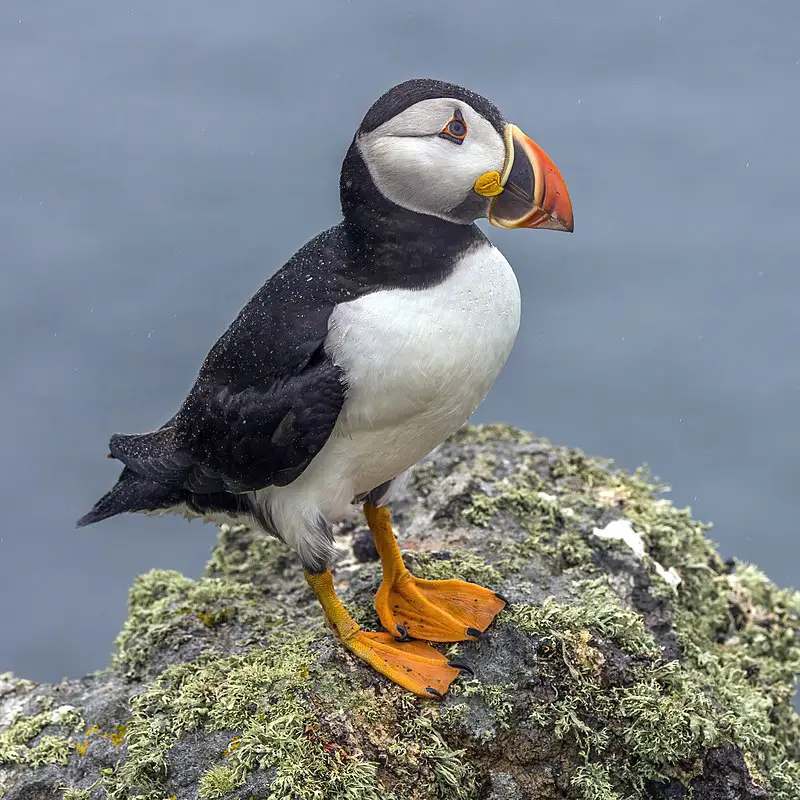
The Atlantic puffin is a seabird that belongs to the auk family. It has two related species found in the northeastern Pacific, namely tufted and horned puffins.
This bird breeds widely throughout Russia, Iceland, Ireland, Norway, Greenland and Canada’s Newfoundland & Labrador as well as Nova Scotia regions of Faroe Islands.
Its colorful beak with markings of yellowish-orange during mating season makes it stand out among other birds.
An interesting fact about this sea-dweller is its ability to fly underwater; they use their wings for propulsion while swimming.
The Atlantic puffin diet consists mainly of fish caught from shallow waters near shorelines or cliffsides where they nest annually during springtime months before embarking on long migrations southward towards winter grounds at seaside coasts until spring returns once again.Scientific classification:
| Kingdom | Animalia |
| Phylum | Chordata |
| Class | Aves |
| Order | Charadriiformes |
| Family | Alcidae |
| Genus | Fratercula |
| Species | F. arctica |
2. Iceland Gull
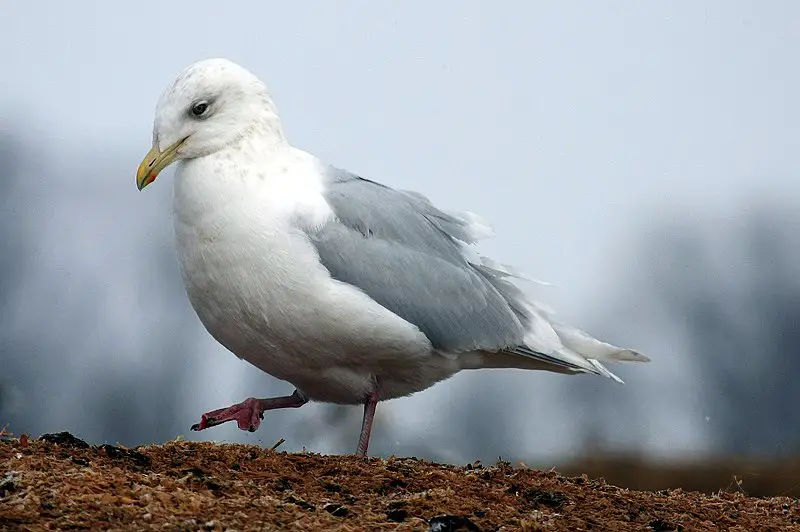
The Iceland Gull is a medium-sized, Arctic-dwelling gull whose range includes Canada and Greenland, but not its namesake.
Its gray wings are marked with black primaries and white tips on the inner secondary feathers which distinguishes it from other similar species like Larus hyperboreus which has completely white secondaries.
It feeds mainly by scavenging or kleptoparasitism – stealing food from other birds – as well as actively pursuing smaller prey such as crustaceans and insects in shallow waters near shorelines.
When breeding season arrives they nest atop rocky outcrops found along coastal areas to provide adequate protection against predators while also giving them an unobstructed view of their surroundings for when danger approaches.
The Iceland Gull can be seen during winter months visiting places like Iceland where temperatures remain more hospitable than its native habitat further north despite the cold weather.Scientific classification:
| Kingdom | Animalia |
| Phylum | Chordata |
| Class | Aves |
| Order | Charadriiformes |
| Family | Laridae |
| Genus | Larus |
| Species | L. glaucoides |
Also Featured In: Most Common Scotland Birds, Birds that Live in Greenland
3. Common Snipe
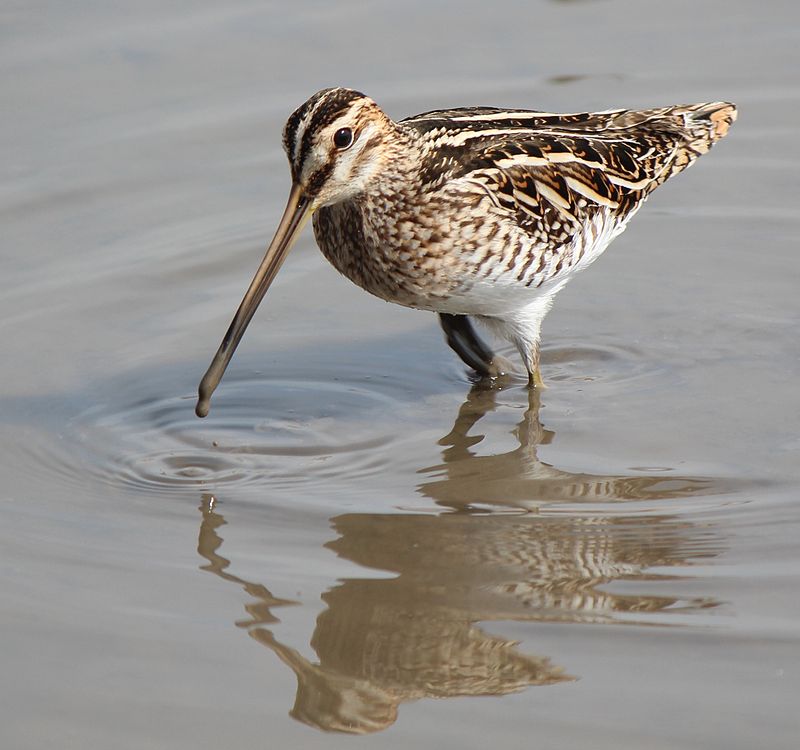
The Common Snipe is a small wader bird that can be found throughout the Palearctic region, from Iceland to northern Russia and Siberia. It breeds in marshes, bogs, tundra and wet meadows during summertime.
Its diet consists of earthworms and insects which it finds by probing with its long bill into soft ground.
During winter months they migrate southwards in search of more favourable conditions for breeding; however their exact migration routes remain unknown.
These birds are fairly secretive but can often be seen skulking around wetlands using their cryptic mottled brown plumage as camouflage against predators.
They have an unmistakable flight pattern – rapid bursts of wing-beats interspersed with glides – making them one of the most distinctive species on our planet.Scientific classification:
| Kingdom | Animalia |
| Phylum | Chordata |
| Class | Aves |
| Order | Charadriiformes |
| Family | Scolopacidae |
| Genus | Gallinago |
| Species | G. gallinago |
4. European Golden Plover
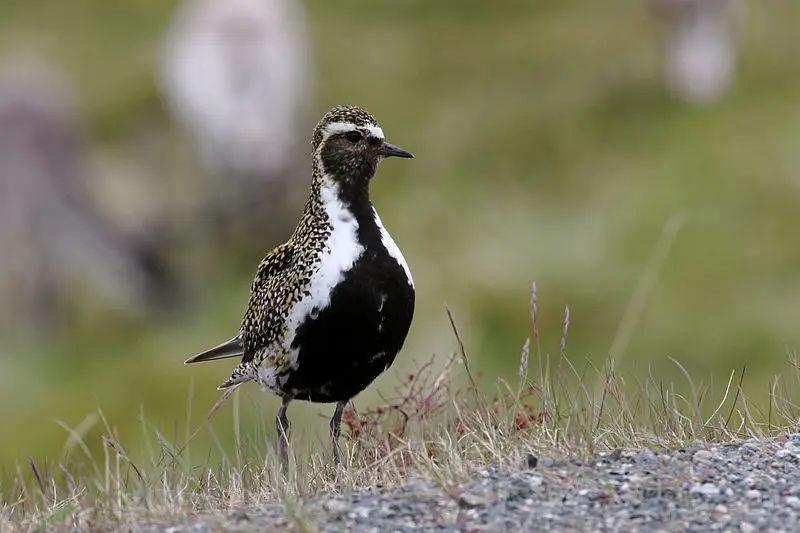
The European golden plover is a large bird that breeds in temperate Eurasia. It has an attractive golden-brown plumage, with black and white markings on its wings and back.
Its long legs are yellowish at the base of their tarsi, while its bill is light grey or pinkish in colour.
During winter months it migrates to Africa where it can be spotted along grasslands and dry plains near water sources such as lakes and rivers.
The species feeds mostly on insects, seeds and small invertebrates found on the ground during breeding season but also eats some berries when available.
They form flocks which help them protect against predators like hawks by providing better visibility for each other from above.
These birds make loud calls upon arrival at their nesting grounds before performing spectacular courtship displays involving flying high into the sky then rapidly diving down again.Scientific classification:
| Kingdom | Animalia |
| Phylum | Chordata |
| Class | Aves |
| Order | Charadriiformes |
| Family | Charadriidae |
| Genus | Pluvialis |
| Species | P. apricaria |
Also Featured In: Shetland Islands Birds You Should Know, Moorland Birds You Need to Know
5. Pink-Footed Goose
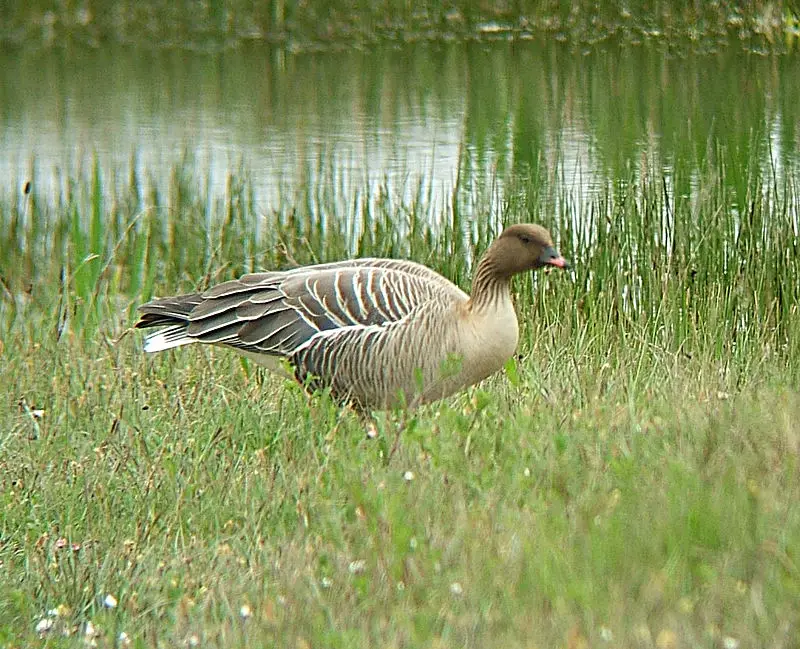
The Pink-footed Goose is a migratory bird which breeds in eastern Greenland, Iceland and Svalbard.
It spends the winter in northwest Europe such as Ireland, Great Britain, Netherlands and western Denmark.
Its name comes from combining Latin for “goose” with ancient Greek words meaning ‘short beak’.
This species has pink legs and feet along with an orange bill. They have grey-brown upperparts and white underparts making them easy to identify amongst other geese.
Their diet consists mainly of grasses but they also eat grains like wheat or barley when available.
The population size of this species is increasing due to conservation efforts made by many countries across Europe who are dedicated to protecting these birds throughout their migration journey each year.Scientific classification:
| Kingdom | Animalia |
| Phylum | Chordata |
| Class | Aves |
| Order | Anseriformes |
| Family | Anatidae |
| Genus | Anser |
| Species | A. brachyrhynchus |
Also Featured In: Birds of Norfolk, Birds that Live in Svalbard
6. Harlequin Duck
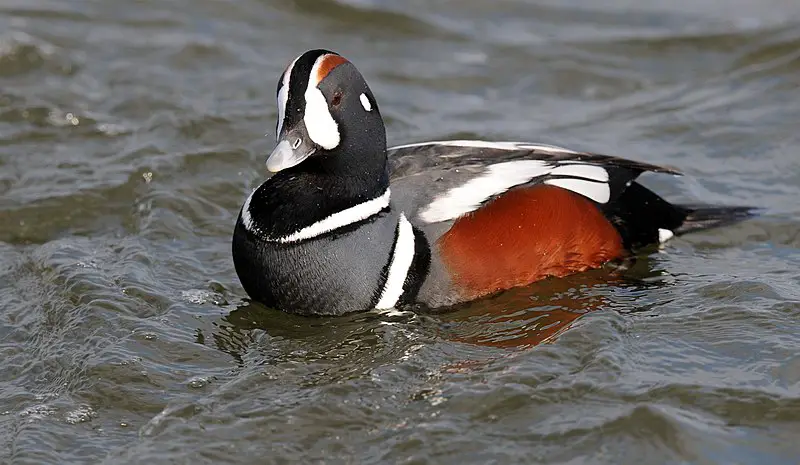
The Harlequin Duck is a small sea duck found in North America, with its name coming from the French Arlequin and Italian Arlecchino of Commedia dell’arte.
It’s also known as Lords and Ladies, Painted Duck, Totem Pole Duck, Rock Duck or Glacier Duck among others.
Its body color can be brownish-gray to black on its upper parts while head and neck are white with chestnut sides.
Wings have large speculum patches that consist of greenish-black metallic feathers being bordered by white ones.
The bill has a yellow tip which contrasts nicely against their dark eyes. They often swim close to shorelines where they feed on crustaceans such as mussels or crabs but will occasionally eat insects too.
These ducks are quite sociable birds so you might even spot them in flocks during migration season between October – April each yearScientific classification:
| Kingdom | Animalia |
| Phylum | Chordata |
| Class | Aves |
| Order | Anseriformes |
| Family | Anatidae |
| Genus | Histrionicus Lesson, 1828 |
| Species | H. histrionicus |
Also Featured In: Birds You’ll Find in Vancouver Island, Tundra Birds
7. Northern Fulmar
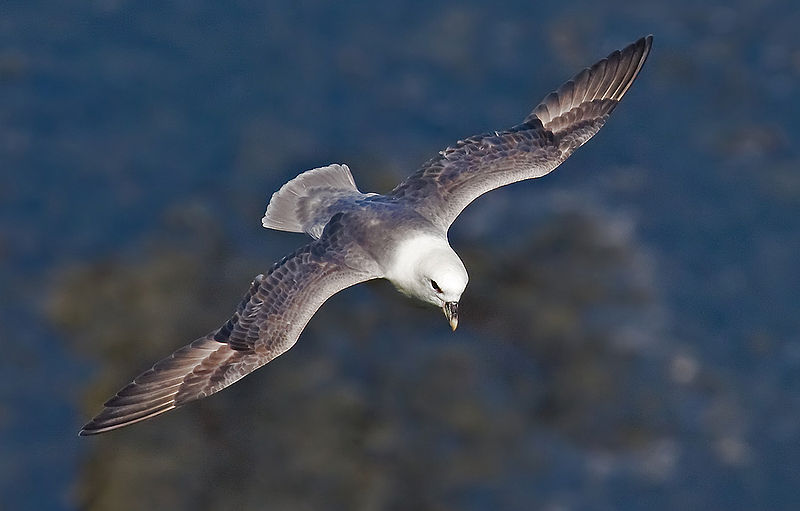
The Northern Fulmar is a seabird that resides in the subarctic regions of the North Atlantic and North Pacific oceans. It has one distinctive color morph: white head and body, along with gray wings.
This bird had been seen only once in Southern Hemisphere south from New Zealand due to its habitat preferences.
Its diet includes fish eggs, crustaceans, small squid and other marine animals which they consume while flying over water surface or when swimming on sea’s top layer looking for food.
The Fulmar also scavenges carrion, especially during breeding season as their chicks need more nutrition than adult birds do.
They are highly abundant species so no conservation measures have been taken yet but monitoring them helps us understand population dynamics better.Scientific classification:
| Kingdom | Animalia |
| Phylum | Chordata |
| Class | Aves |
| Order | Procellariiformes |
| Family | Procellariidae |
| Genus | Fulmarus |
| Species | F. glacialis |
Also Featured In: Birds You’ll Find in the Sea, Birds that Live in the Ocean
8. Thayer’s Gull
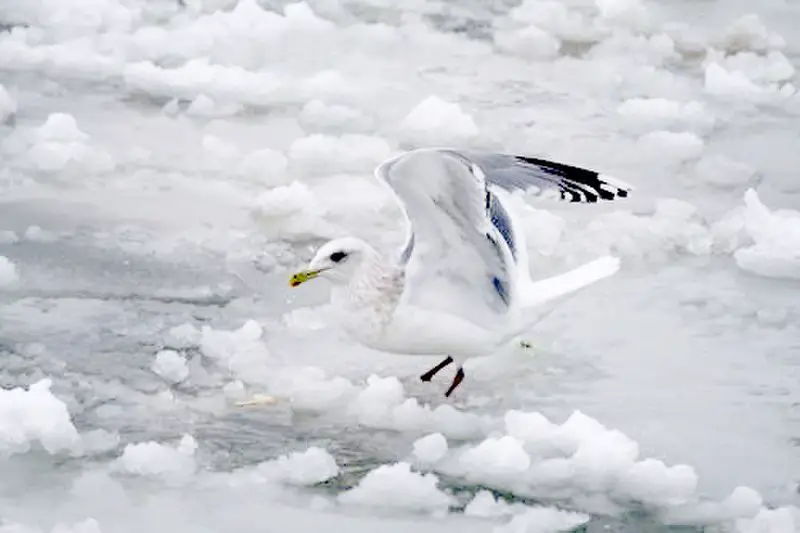
Thayer’s gull is a large, majestic bird native to North America. It breeds in the Arctic islands of Canada, and winters primarily on the Pacific coast from southern Alaska to Gulf of California.
There are also wintering populations found on Great Lakes and upper Mississippi River as well as Japan, where it has been recorded as a vagrant species.
This subspecies of Iceland Gull stands out with its slate gray mantle, white head and neck with black spots near bill base along pale yellow eyes surrounded by dark red eye-ring; while wings show alternating light grey inner webs and darker outer ones tipped in blackish coloration.
Thayer’s gulls feed mostly on fish but they can also be seen scavenging for food around dumpsters or catching insects midair when migrating during summer months.Scientific classification:
| Kingdom | Animalia |
| Phylum | Chordata |
| Class | Aves |
| Order | Charadriiformes |
| Family | Laridae |
| Genus | Larus |
| Species | L. glaucoides |
| Subspecies | L. g. thayeri |
Also Featured In: Common Northwest Territories Birds,
9. Barrow’s Goldeneye
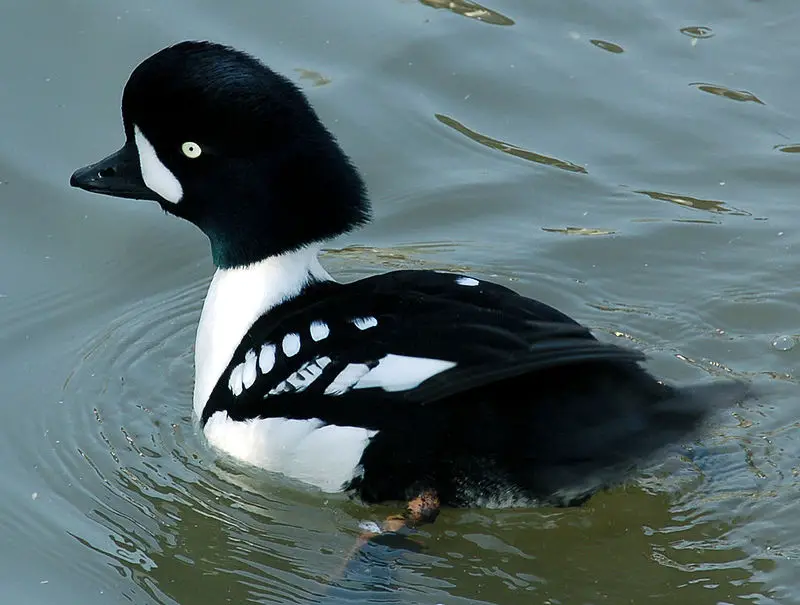
Barrow’s goldeneye is a medium-sized sea duck of the genus Bucephala, commonly known as “goldeneyes”.
This bird was named after Sir John Barrow and its scientific name derives from Ancient Greek boukephalos, meaning “bullheaded”.
It has an unmistakable bulbous head shape which distinguishes it from other birds in the same family.
The species name islandica means Iceland but this duck can be found across North America throughout winter months before heading to breeding grounds in boreal forests during summertime.
They feed on aquatic plants by diving underwater for food and are excellent swimmers due to their webbed feet.
These strong flyers form large flocks when migrating each year; making them easy to spot if you’re lucky enough.Scientific classification:
| Kingdom | Animalia |
| Phylum | Chordata |
| Class | Aves |
| Order | Anseriformes |
| Family | Anatidae |
| Genus | Bucephala |
| Species | B. islandica |
10. Black-Legged Kittiwake
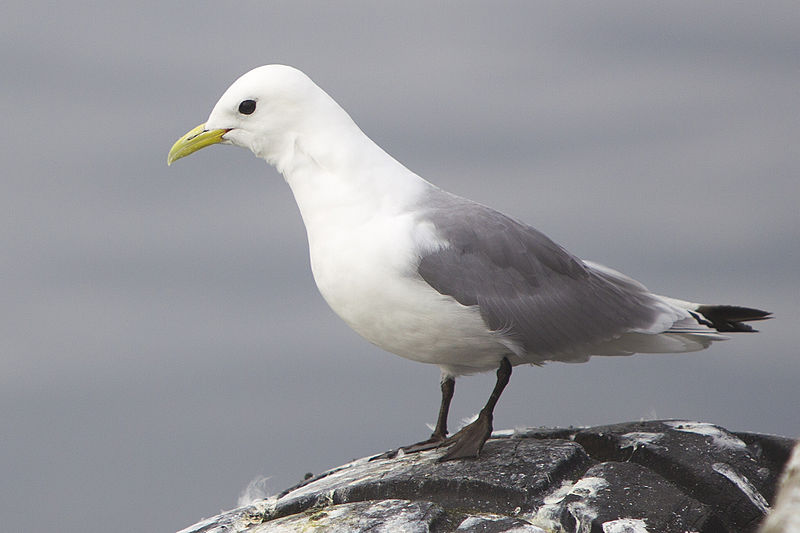
The Black-legged Kittiwake is a seabird of the gull family Laridae. It was first described by Carl Linnaeus in 1758 and its name derives from its distinctive call which sounds like ‘kittee-wa-aaake, kitte-wa-aaake’.
These birds are mainly found along coastal regions with plenty of food sources such as plankton and fish. They have white bodies with slate grey wings and black legs.
The bill is yellowish orange to red depending on age or season.
In winter they migrate southwards away from their northern habitats into warmer waters for breeding purposes before returning again once spring arrives.Scientific classification:
| Kingdom | Animalia |
| Phylum | Chordata |
| Class | Aves |
| Order | Charadriiformes |
| Family | Laridae |
| Genus | Rissa |
| Species | R. tridactyla |
11. Great Skua
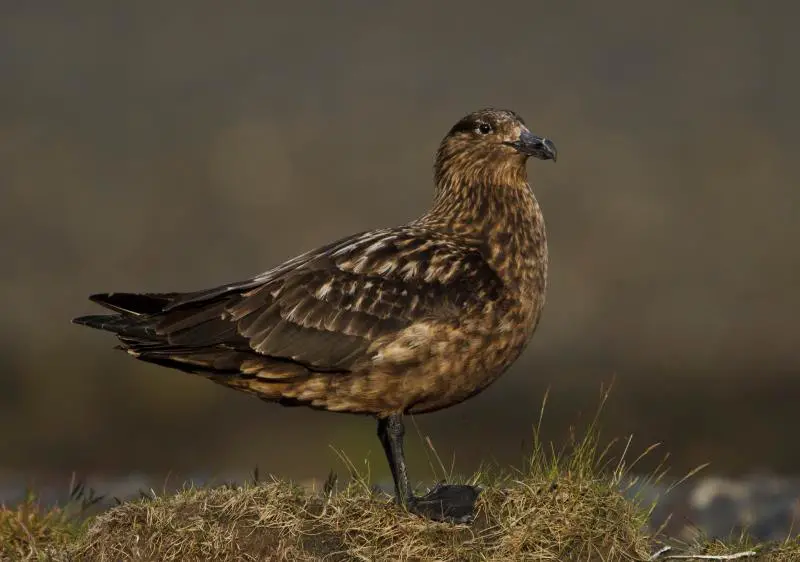
The Great Skua is a large sea bird belonging to the family Stercorariidae, found in areas such as Faroe Islands and Iceland.
It has a size similar to that of herring gulls, with its diet consisting mainly of fish caught at the surface or taken from other birds.
This species was first described by Danish zoologist Morten Thrane Brünnich in 1764 under the name Cath.
They are powerful predators who will sometimes use mobbing tactics against larger prey like gannets and eiders until they give up their catch.
These birds mate for life but may build nests near colonies if there aren’t enough suitable territories available on their own island range.
Although these skuas might seem intimidating due to their fierce nature when protecting young, they can be quite timid around humans so should not be approached too closely.Scientific classification:
| Kingdom | Animalia |
| Phylum | Chordata |
| Class | Aves |
| Order | Charadriiformes |
| Family | Stercorariidae |
| Genus | Stercorarius |
| Species | S. skua |
12. Manx Shearwater
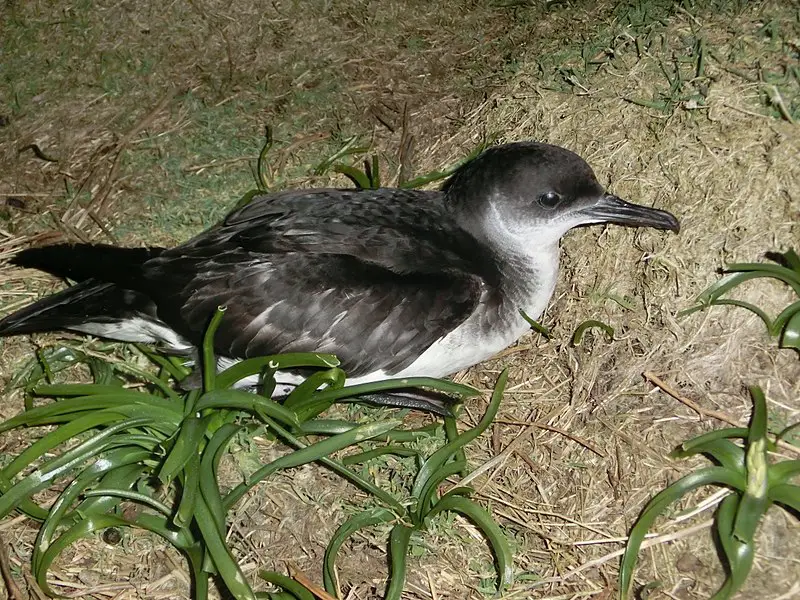
The Manx Shearwater is a mid-sized seabird that belongs to the Procellariidae family. Its scientific name records an old English term, ‘Manks puffin’, used in the 17th century for shearwaters’ cured carcasses.
The Atlantic Puffin acquired its unique name much later due to their similar appearance.
These birds breed on coastal cliffs and islands across Northern Europe and North America before migrating south during winter months when food supply reduces in colder regions.
They are known for their remarkable ability of flying long distances with minimal fat reserves over open ocean waters while searching for food like fish, squid, crustaceans etcetera.
With dwindling numbers due to various human activities such as fishing practices involving drift nets or changes in habitat caused by destruction of nesting sites, they have been included under conservation status lists since 2000sScientific classification:
| Kingdom | Animalia |
| Phylum | Chordata |
| Class | Aves |
| Order | Procellariiformes |
| Family | Procellariidae |
| Genus | Puffinus |
| Species | P. puffinus |
Also Featured In: European Birds, Birds that Live in Faroe Islands
13. Razorbill
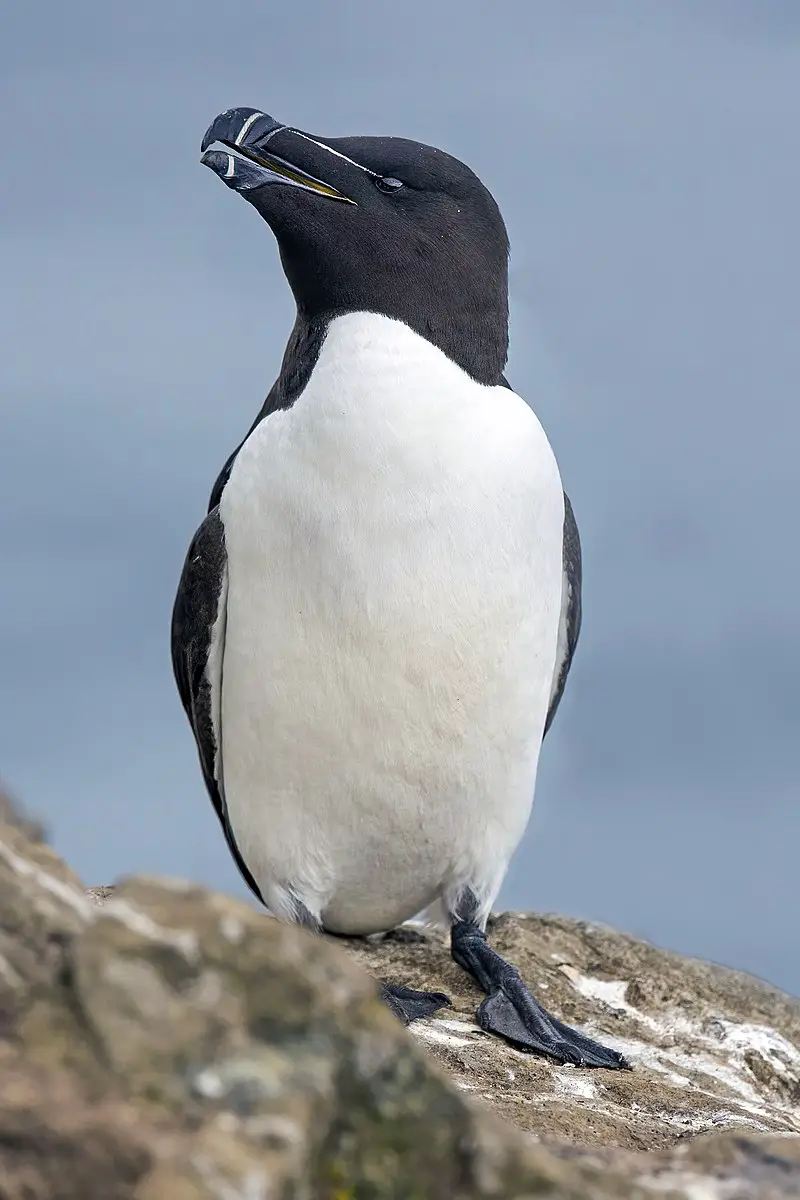
The Razorbill is a seabird of the family Alcidae and is closely related to the extinct great auk. It lives in subarctic waters of the Atlantic Ocean, primarily black with white underside and both male and female look identical.
They have long pointed wings which help them dive underwater for their food that consists mainly of fish and crustaceans.
Usually they form large colonies on cliffs or rocky islands but can also be found solitary during breeding season when pairs nest together in crevices or rock ledges near sea level.
During winter they migrate southwards into open water areas where they stay until spring arrives again before returning back to breed once more.
The razorbill’s population has been declining due to human activity such as overfishing so conservation efforts are being made by governments across Europe in order to protect this species from extinction.Scientific classification:
| Kingdom | Animalia |
| Phylum | Chordata |
| Class | Aves |
| Order | Charadriiformes |
| Family | Alcidae |
| Genus | Alca |
| Species | A. torda |
Also Featured In: Common Cornwall Birds, Black And White Birds You Don’t Know About
14. Common Loon
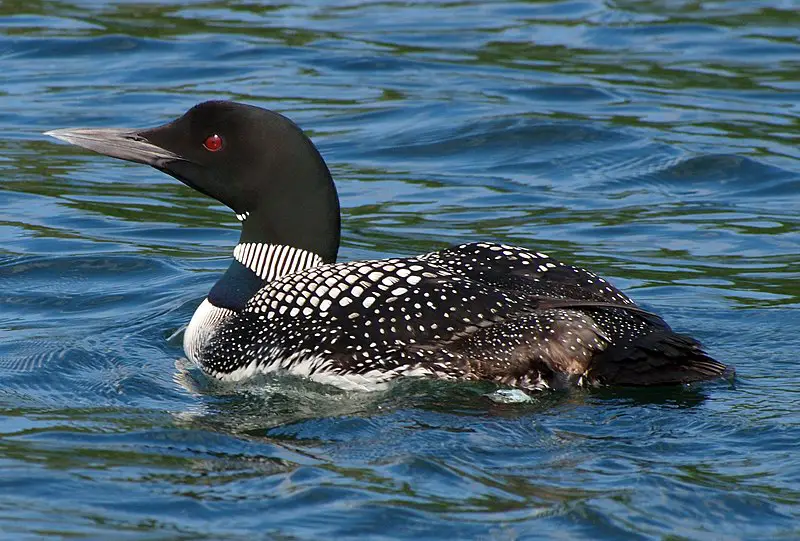
The Common Loon is a beautiful bird found in North America. It has a large black head and neck, with a greenish to purple sheen that stands out against its dark grey upperparts.
The underparts are pure white except for some black on the undertail coverts and vent.
During non-breeding season adults have brown plumage instead of the bright shades they show during breeding season.
They also exhibit unique behaviors such as diving underwater to catch fish or swimming along lakeshores while calling loudly, which is how they got their name “great northern diver”.
With their stunning colors and interesting behavior, it’s no wonder why these birds make up an iconic part of many landscapes across North America.Scientific classification:
| Kingdom | Animalia |
| Phylum | Chordata |
| Class | Aves |
| Order | Gaviiformes |
| Family | Gaviidae |
| Genus | Gavia |
| Species | G. immer |
15. European Storm Petrel
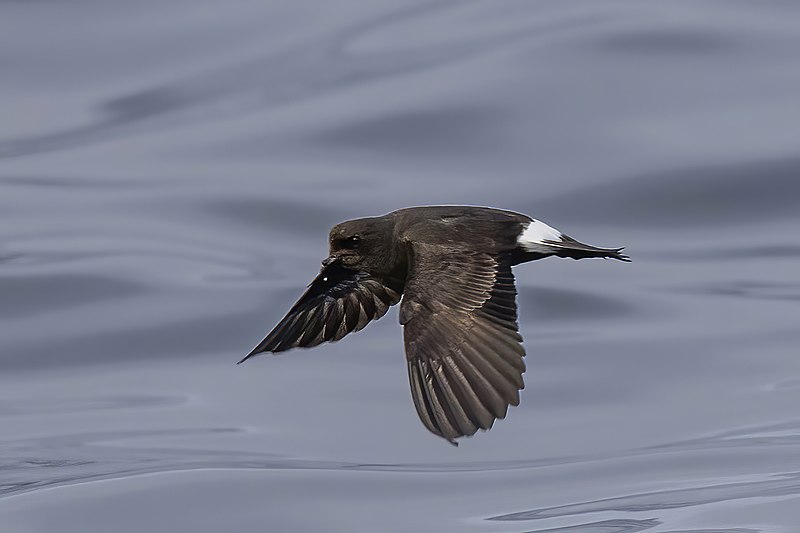
The European Storm Petrel is a small black seabird with a white rump and wings. It has an unusual, bat-like flight which flutters across the sky.
Its population mainly breeds on islands off the coasts of Europe, but can also be found in parts of North America as well as Japan and Korea.
They feed on planktonic crustaceans such as copepods by ‘pattering’ over water surface or dip-feeding where they plunge into the sea to catch their prey before flying away again.
These birds are elusive yet social when breeding; during this time they form colonies often near cliffs for protection from predators and harsh conditions at sea.Scientific classification:
| Kingdom | Animalia |
| Phylum | Chordata |
| Class | Aves |
| Order | Procellariiformes |
| Family | Hydrobatidae |
| Genus | Hydrobates |
| Species | H. pelagicus |
16. Purple Sandpiper
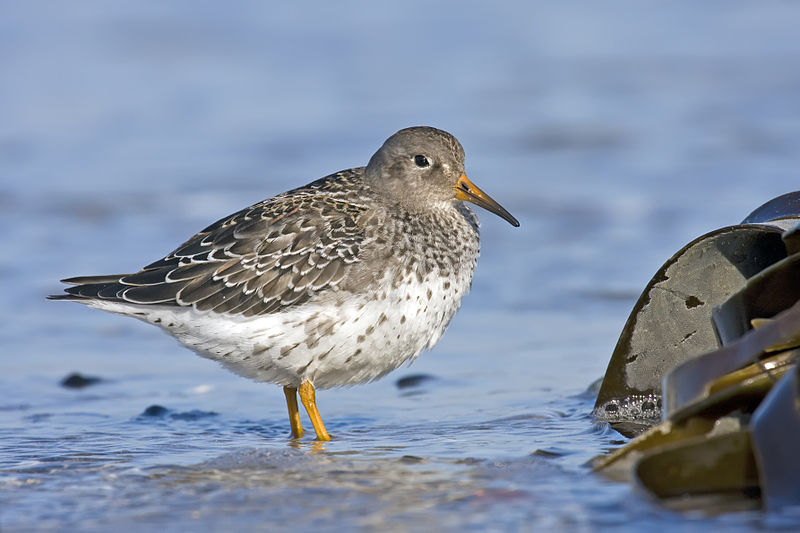
The Purple Sandpiper is a small shorebird of the Scolopacidae family, found in arctic and subarctic regions of Eurasia and North America. In winter it migrates south to the Atlantic coast for warmer temperatures.
It was formally described by Danish zoologist Morten Thrane Brünnich back in 1764 as Tringa maratina.
Generally grayish-brown with purple highlights on its head, neck and wings when seen from afar, this bird has white underparts that contrast beautifully against its darker feathers while standing out prominently against snow or ice covered landscapes during winters.
Its diet consists mainly of insects but also includes seeds, worms and other invertebrates which they search for along rocky shores or mudflats near ocean coasts throughout their range.Scientific classification:
| Kingdom | Animalia |
| Phylum | Chordata |
| Class | Aves |
| Order | Charadriiformes |
| Family | Scolopacidae |
| Genus | Calidris |
| Species | C. maritima |
17. Snow Bunting
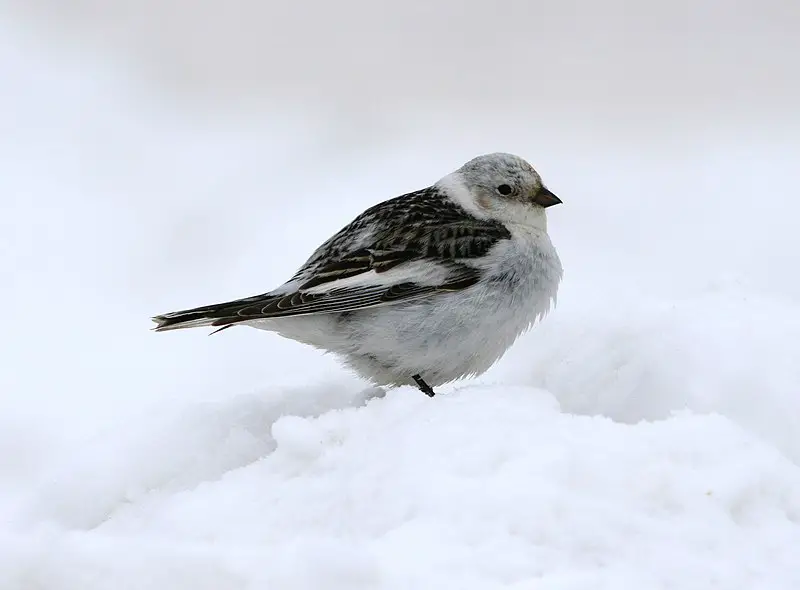
The snow bunting is a small and colourful passerine bird found in the Arctic regions of the northern hemisphere.
With its bright white feathers, black markings on its wings and tail, it stands out amongst other birds that inhabit these cold climates.
This species has adapted well to surviving in this harsh environment; they nest under boulders or rocks so their eggs are shielded from predators and blizzards alike.
They feed mainly on insects during summer months but switch to seeds when winter arrives as they seek food sources which will not freeze over with ice.
The snow bunting is an important part of the local ecosystem due to providing sustenance for larger animals such as foxes and owls who rely upon them for survival throughout wintertime.Scientific classification:
| Kingdom | Animalia |
| Phylum | Chordata |
| Class | Aves |
| Order | Passeriformes |
| Family | Calcariidae |
| Genus | Plectrophenax |
| Species | P. nivalis |
Also Featured In: Most Common Winter Birds, Flocks Birds around Us
18. Barnacle Goose
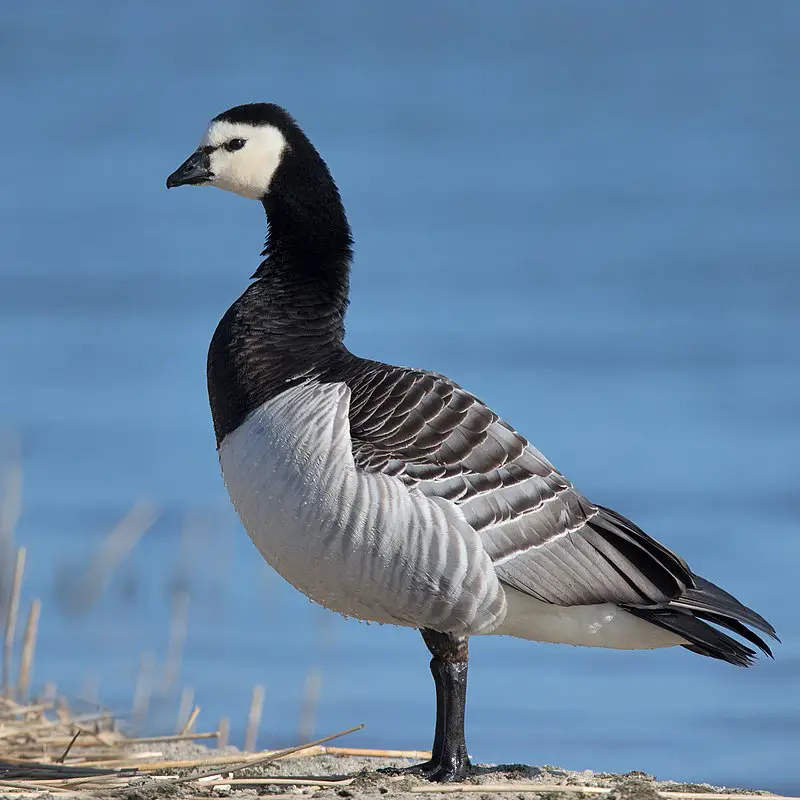
The Barnacle Goose is a species of black goose from the Branta genus. It has mostly black plumage and can be distinguished from other types of geese, such as grey Anser species, by its unique colouring.
This bird was first classified taxonomically in 1758 and genetic studies have recently revealed that it is actually related to the Cackling Goose lineage rather than brant geese which it bears resemblance to.
The barnacle goose lives all around northern Europe during winter months but travels further north into Greenland or Svalbard for breeding season when they will lay eggs on cliffs close to water sources so their young ones may take advantage of food-rich waters below them easily after hatching.Scientific classification:
| Kingdom | Animalia |
| Phylum | Chordata |
| Class | Aves |
| Order | Anseriformes |
| Family | Anatidae |
| Genus | Branta |
| Species | B. leucopsis |
19. Red Phalarope
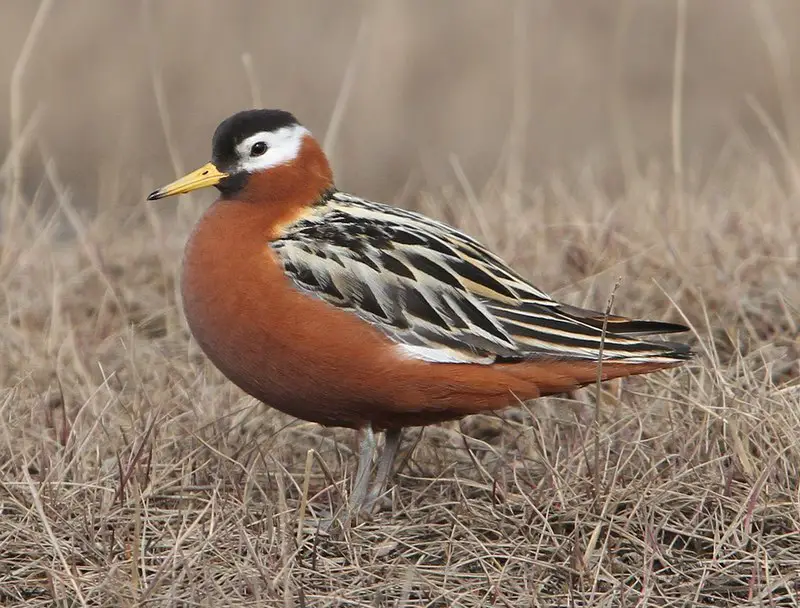
The Red Phalarope (Phalaropus fulicarius) is a small wader, native to the Arctic regions of North America and Eurasia.
During breeding season it will migrate across oceanic routes and winter at sea on tropical oceans – an unusual behaviour for a wader species.
First described in 1750 by George Edwards, this bird has distinctive red plumage with black markings around its neck and wings.
Its bill is thin but sharp which helps them catch their prey from the water’s surface such as insects or fish eggs.
As they are highly agile birds, they can be found spinning rapidly in shallow waters whilst searching for food using their long toes as paddles.Scientific classification:
| Kingdom | Animalia |
| Phylum | Chordata |
| Class | Aves |
| Order | Charadriiformes |
| Family | Scolopacidae |
| Genus | Phalaropus |
| Species | P. fulicarius |
20. Common Murre
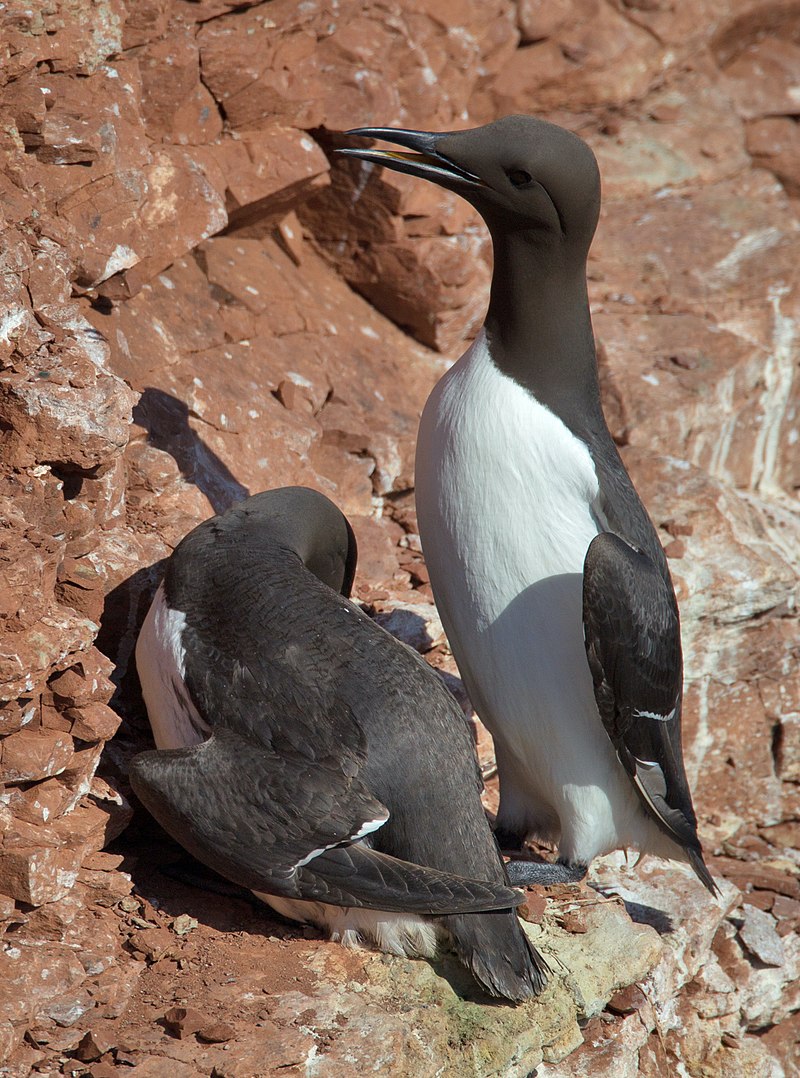
The Common Murre, also known as a Common Guillemot is an Arctic and Boreal seabird that can be seen in North Atlantic and North Pacific oceans.
It has a stocky body with white underparts, black upper parts and striking yellow legs.
They are relatively large birds compared to their relatives but have weak flying abilities – they fly fast but not very agilely.
Their agility lies underwater instead where they are able to dive deep into the ocean depths for food such as fish, crustaceans or molluscs.
During breeding season these birds come ashore on rocky cliffsides or islands where they create burrows for nesting purposes.
The female lays one egg each year which both parents share incubation duties over it until hatching at around 30 days later.Scientific classification:
| Kingdom | Animalia |
| Phylum | Chordata |
| Class | Aves |
| Order | Charadriiformes |
| Family | Alcidae |
| Genus | Uria |
| Species | U. aalge |
21. Great Black-Backed Gull
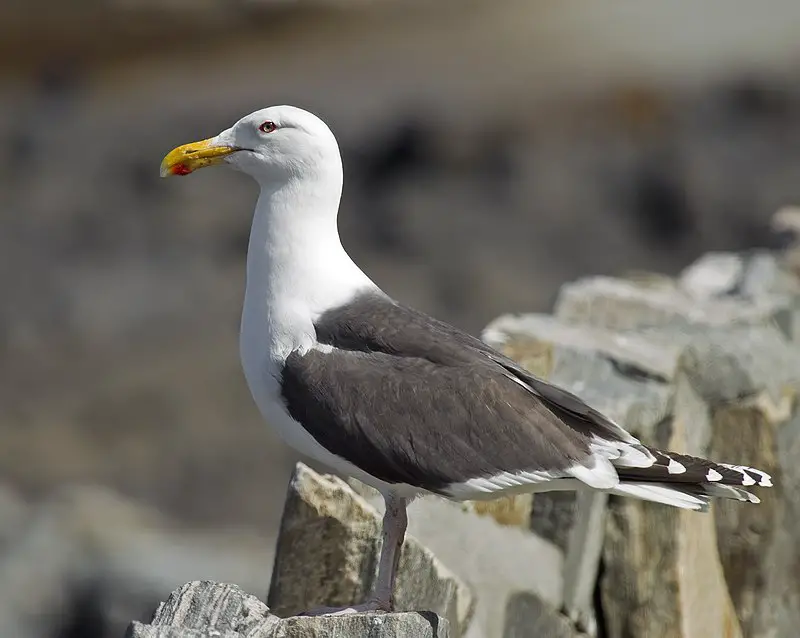
The Great Black-Backed Gull is the largest member of its family and aptly named as “king of the Atlantic waterfront”.
It can be found on both European and North American coasts, islands in the North Atlantic, or farther inland near large lakes.
This seabird is an aggressive hunter with a tendency to scavenge for food that it may not have caught itself.
In addition to their formidable hunting skills they are also adept at stealing from other birds who have successfully managed to catch something themselves.
As such they are known for being very territorial when defending their nests during mating season.
The powerful wingspan of this majestic species make them able to soar through even strong winds but still remain graceful while doing so.
All these characteristics combined show why great black-backed gulls truly live up to their name as kings among seafaring birds.Scientific classification:
| Kingdom | Animalia |
| Phylum | Chordata |
| Class | Aves |
| Order | Charadriiformes |
| Family | Laridae |
| Genus | Larus |
| Species | L. marinus |
Also Featured In: Birds of Nova Scotia, Acadia National Park Birds
22. Common Ringed Plover
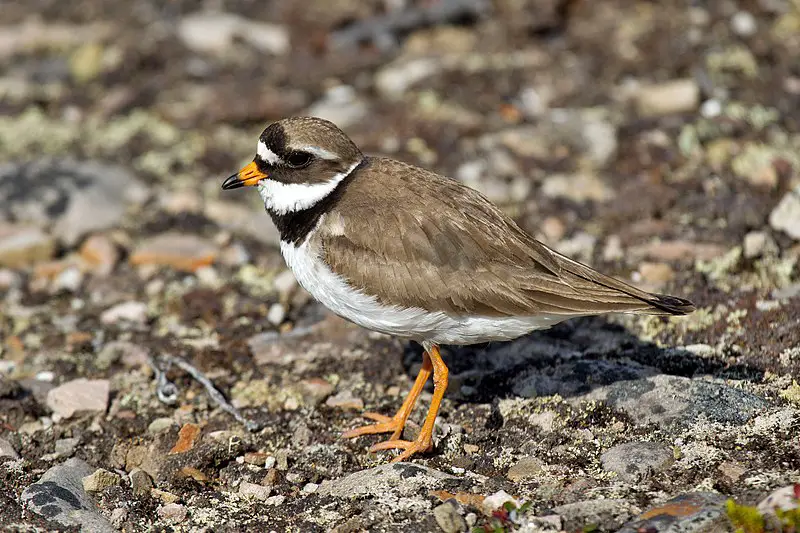
The Common Ringed Plover is a small migratory bird found in Arctic Eurasia. It has yellowish feathers and its Latin name, Charadrius hiaticula, means ‘bird of ravines’.
This species breeds on beaches and tundra during northern summer months before flying south when winter arrives.
Its diet consists mostly of insects which it catches by running along the shoreline or through shallow water with wings spread open to create a shadow that helps catch prey.
The common ringed plover nests in short grasses near water’s edge where they lay two eggs per clutch which hatch within three weeks.
These birds are highly territorial so will often defend their patch fiercely against competitors.Scientific classification:
| Kingdom | Animalia |
| Phylum | Chordata |
| Class | Aves |
| Order | Charadriiformes |
| Family | Charadriidae |
| Genus | Charadrius |
| Species | C. hiaticula |
23. Red-Breasted Merganser
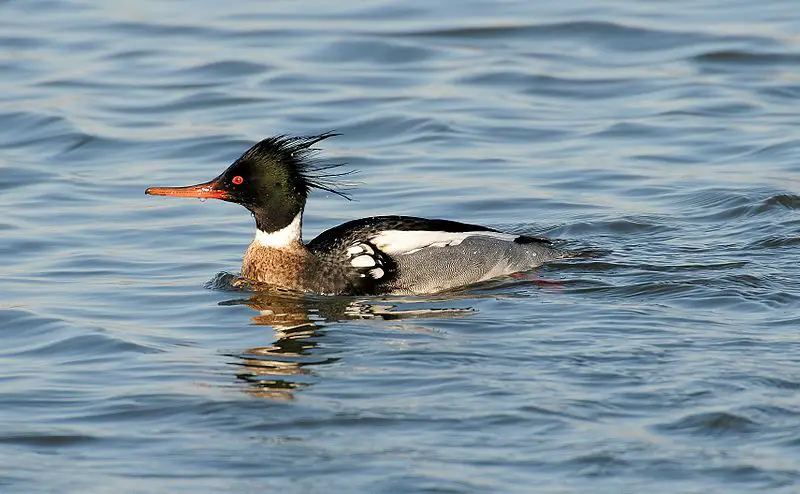
The Red-breasted merganser is a diving duck, part of the sawbills family. It was first described in 1758 by Carl Linnaeus with its Latin name “Mergus Serrator” meaning sawyer or cutter.
With their red breast feathers and black heads, these birds are easy to spot when they’re near water bodies such as lakes and rivers hunting for fish.
They also feed on crustaceans and mollusks that they catch underwater.
During breeding season, the males develop white patches around their eyes making them even more distinct from other species of ducks.
The Red-breasted Mergansers’ population numbers have been declining over recent years due to habitat loss caused by human activities like construction projects close to wetlands where these birds live but conservation efforts can help protect this majestic bird’s future generations.Scientific classification:
| Kingdom | Animalia |
| Phylum | Chordata |
| Class | Aves |
| Order | Anseriformes |
| Family | Anatidae |
| Genus | Mergus |
| Species | M. serrator |
24. Black Guillemot
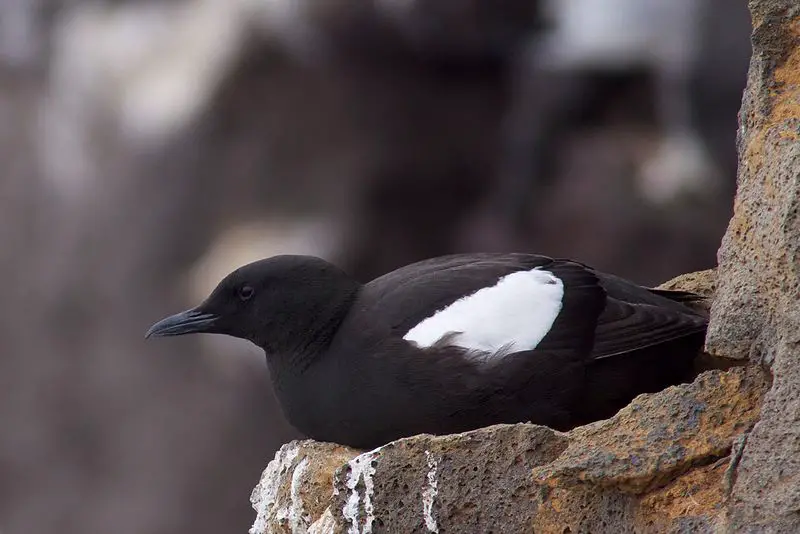
The Black Guillemot is a striking seabird found throughout the northern Atlantic coasts and eastern North American coasts. It has black feathers with white underparts, a red bill, and bright yellow feet.
They live around rocky shores, cliffs, and islands in single or small groups.
During winter months they migrate southwards from their high arctic breeding grounds to search for food sources such as fish eggs or invertebrates like shrimp that can be caught near shorelines.
Their diet also includes seeds and berries during summertime when they are nesting on coastal ledges creating burrows where they lay up to four pastel-colored eggs at once.
These amazing birds are very efficient swimmers using both their wings and webbed feet to propel themselves through water quickly while hunting prey.Scientific classification:
| Kingdom | Animalia |
| Phylum | Chordata |
| Class | Aves |
| Order | Charadriiformes |
| Family | Alcidae |
| Genus | Cepphus |
| Species | C. grylle |
25. Parasitic Jaeger
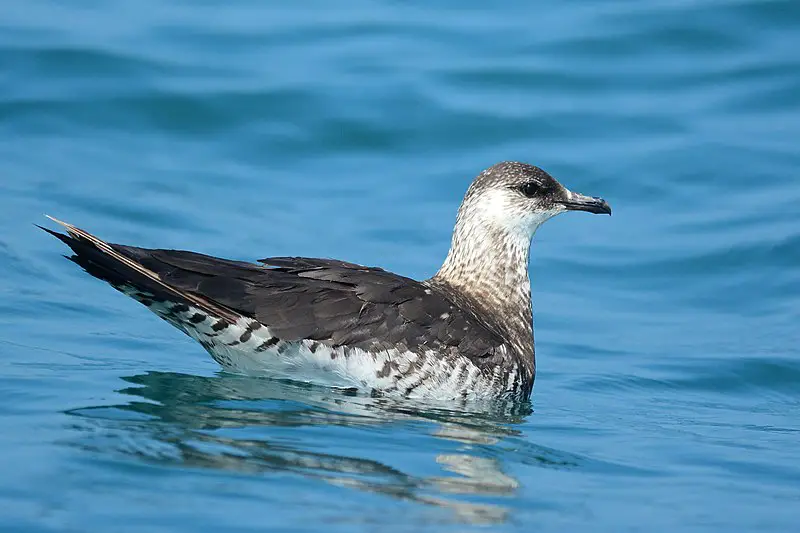
The Parasitic Jaeger is a migratory bird that breeds in cold climates of Northern Scandinavia, Scotland, Iceland, Greenland and parts of Canada, Alaska and Siberia.
During the breeding season it feeds primarily on kleptoparasitism – stealing food from other birds.
In winter they migrate to warmer regions across the southern hemisphere where they feed mainly by scavenging off fish or carrion left behind by fishing boats or whales.
This species is easily identified by its brownish-gray plumage with white patches on its wings and tail feathers as well as yellow eyes which are quite distinctive among skuas.
The parasitic jaeger has adapted to many different habitats ranging from coastal areas to inland lakes making them an interesting species to watch out for while exploring nature.Scientific classification:
| Kingdom | Animalia |
| Phylum | Chordata |
| Class | Aves |
| Order | Charadriiformes |
| Family | Stercorariidae |
| Genus | Stercorarius |
| Species | S. parasiticus |